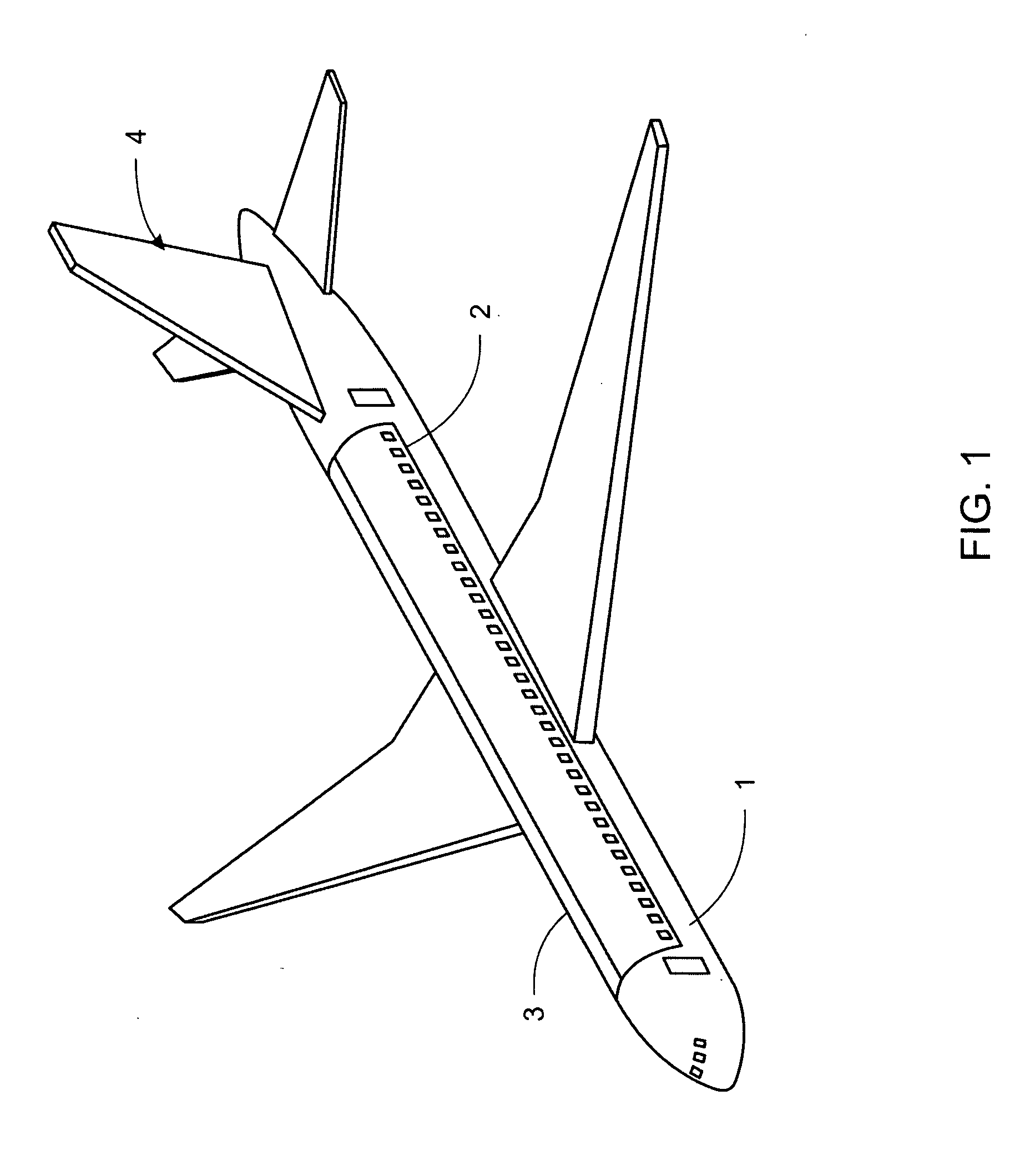Hybrid emergency ejection system
a technology of emergency escape and hybrid ejection system, which is applied in the direction of emergency equipment, aircraft ejection means, transportation and packaging, etc., can solve the problem that the pilot is given a short time to override any automatic deployment of the system
- Summary
- Abstract
- Description
- Claims
- Application Information
AI Technical Summary
Benefits of technology
Problems solved by technology
Method used
Image
Examples
Embodiment Construction
[0025]Referring to FIG. 1, a conventional passenger aircraft (1) is provided with a left cabin cover (2) and a right cabin cover (3). In an emergency situation where a normal landing is either impossible or highly dangerous, the cabin covers (2) and (3) are separated from the aircraft and ejected to the left and right of the aircraft (1). This separation is normally accomplished by the installation of detonator cord along the separation points, such as cords of lead azide. The pilot or co-pilot controls ignition of the detonator cord through electrically controlled squids that ignite the cord. Lead azide burns rapidly and at an extremely high temperature, and burns a separation line where it is embedded in or along the aircraft body. Explosive charges are mounted along the sides of the cabin covers (2) and (3) which propel the cabin covers (2) and (3) to the left and right of the fuselage, respectively, to prevent the cabin covers (2) and (3) from striking the pods or tail wings of ...
PUM
 Login to View More
Login to View More Abstract
Description
Claims
Application Information
 Login to View More
Login to View More - R&D
- Intellectual Property
- Life Sciences
- Materials
- Tech Scout
- Unparalleled Data Quality
- Higher Quality Content
- 60% Fewer Hallucinations
Browse by: Latest US Patents, China's latest patents, Technical Efficacy Thesaurus, Application Domain, Technology Topic, Popular Technical Reports.
© 2025 PatSnap. All rights reserved.Legal|Privacy policy|Modern Slavery Act Transparency Statement|Sitemap|About US| Contact US: help@patsnap.com



